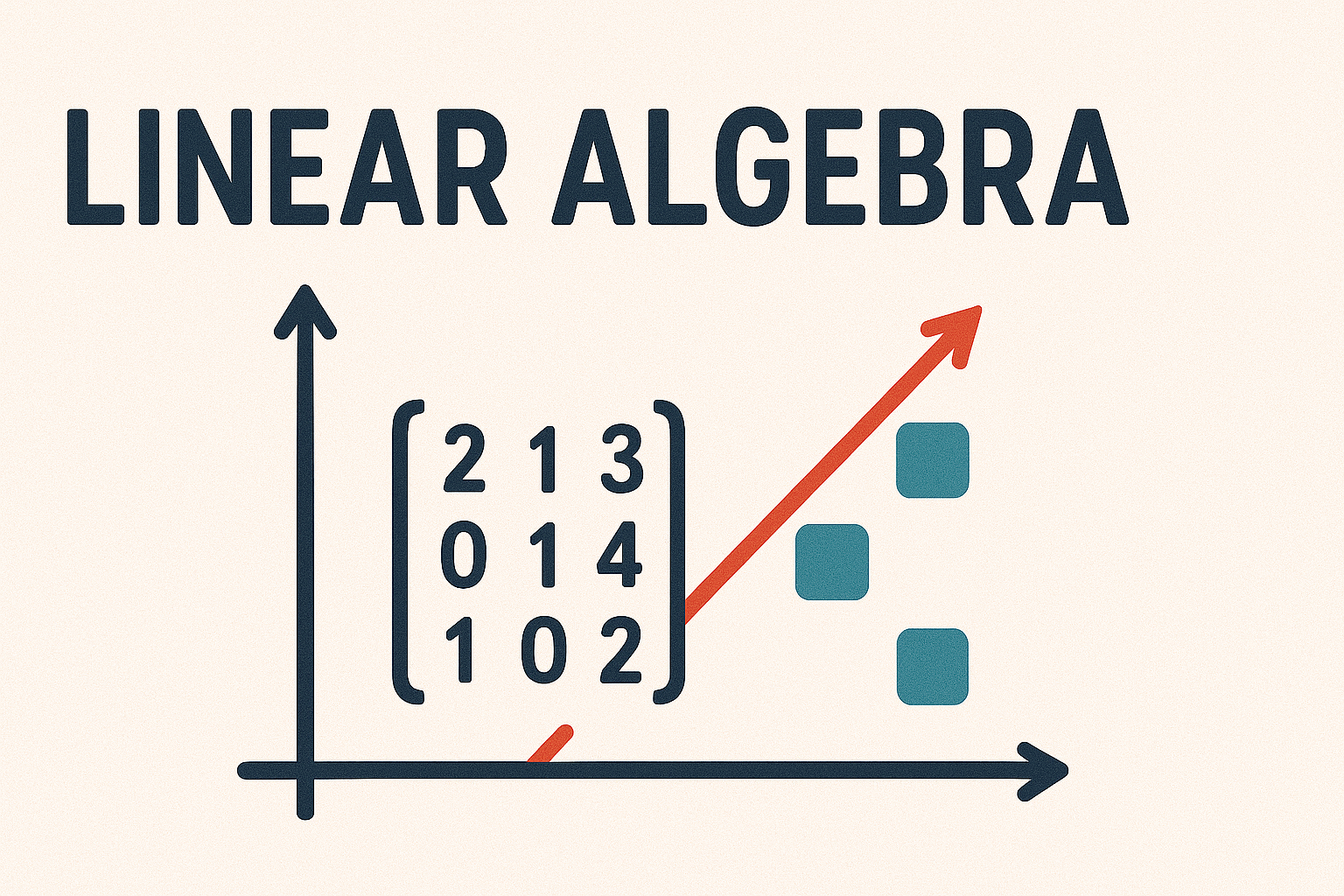3.7. Linear combination of vectors#
Definition 3.8 (Linear combination of vectors)
Let \(\mathbf{v},\mathbf{u}_1,\dots,\mathbf{u}_m\in\mathbb{R}^n\) such that
for some \(\alpha_1,\alpha_2,\dots,\alpha_m\in \mathbb{R}\) [1]. Such a sum is called a linear combination of vectors.
For example
and so we have expressed \((2,0,7)\) as a linear combination of the vectors \((1,5,-1)\) and \((0,-10,9)\). To write a vector \(\mathbf{v}\) as a linear combination of vectors \(\mathbf{u}_1, \mathbf{u}_2, \ldots, \mathbf{u}_m\) we need to calculate the values of the coefficients \(\alpha_1, \alpha_2, \ldots, \alpha_m\) from equation (3.6). To do this we need to solve the system of linear equations
which can be written as the augmented matrix
and the values of the coefficients \(\alpha_1, \alpha_2, \ldots, \alpha_m\) can be calculated using Gaussian elimination.
Example 3.5
Express the vector \(\mathbf{v} = (7, -2, -11)\) as a linear combination of the vectors
Solution
We need to find the values of the coefficients \(\alpha_1\), \(\alpha_2\) and \(\alpha_3\) in the following linear combination
so we need the solution to the linear system
Using Gauss-Jordan elimination
so \(\alpha_1 = 1\), \(\alpha_2 = -2\) and \(\alpha_3 = 2\). Therefore \(\mathbf{v}\) can be expressed as the linear combination of vectors
3.7.1. Basis vectors#
A special type of vector is a basis vector which all other vectors in the space can be represented as a linear combination of the basis vectors (we will cover basis in more detail later). In a Cartesian space the simplest basis vectors are unit vectors that point in the co-ordinate directions. In \(\mathbb{R}^3\) we use the basis vectors \(\mathbf{i} = (1, 0, 0)\), \(\mathbf{j} = (0, 1, 0)\) and \(\mathbf{k} = (0, 0, 1)\) (Fig. 3.10).
Fig. 3.10 The three basis vectors in \(\mathbb{R}^3\).#
Using basis vectors we can represent any vector, \(\mathbf{a} = (a_1, a_2, a_3)\) say, as a linear combination of \(\mathbf{i}\), \(\mathbf{j}\) and \(\mathbf{k}\), i.e.,
For example
